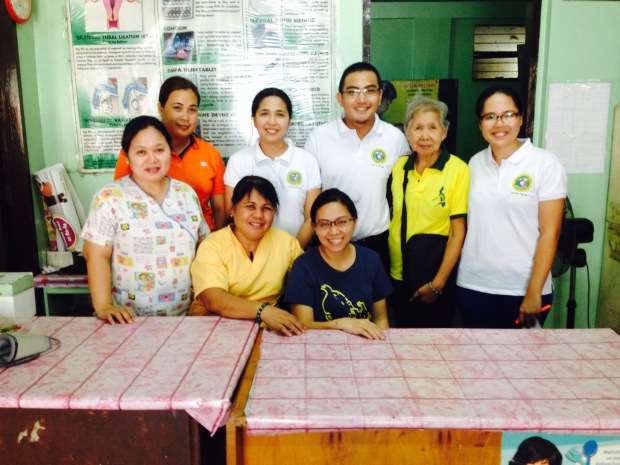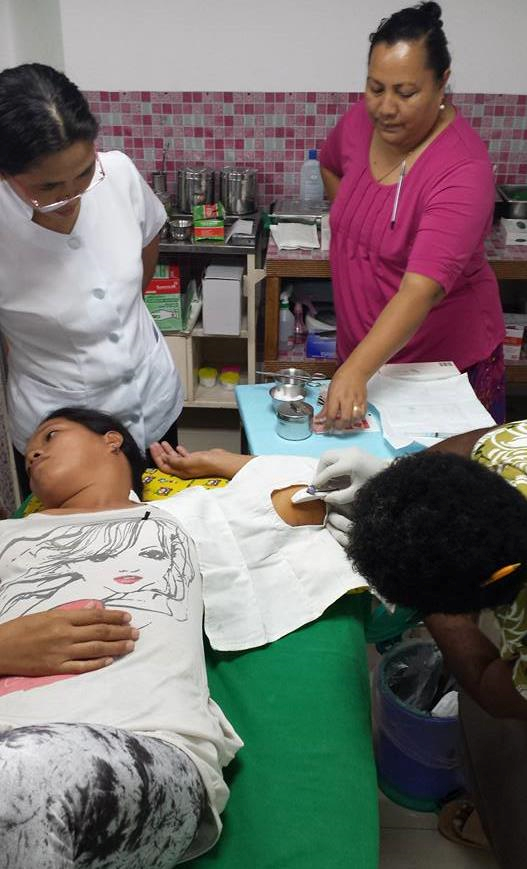Funding from PopOffsets has provided new Family Planning for the people of Caloocan City in the Philippines. £5,000 of funding through the Population Matters Charity has helped over 100 participants with procedures to give them control over their fertility. There are many challenges to overcome including people in the community who stick to their myths on contraceptive methods despite efforts in the project to provide information and education.
Partnerships have been established with:
- Caloocan City Health Department for access to the district’s health centers and the barangay health workers assigned there
-
Caloocan Private Midwives Association for assistance in demand generation and service delivery
-
Philippine Society of Reproductive Health Nurses for assistance in community education and service delivery
Here is the latest report:
PERIODIC REPORT
|
PROJECT TITLE |
Bridging the Gap In Family Planning Service Delivery |
|
NAME OF PROPONENT |
The Family Planning Organization of the Philippines |
|
NAME AND DESIGNATION OF CONTACT PERSON |
Mr Nandy Senoc Acting Executive Director |
|
ADDRESS OF THE ORGANIZATION |
50 Doña Hemady St., New Manila, Quezon City |
|
CONTACT DETAILS OF THE ORGANIZATION |
(02) 7217101 / (02) 3588139 fpop1969@yahoo.com, nsenoc_fpop@yahoo.com |
|
PROJECT SITE |
Caloocan City, District 2, National Capital Region, Philippines |
|
PROJECT PERIOD |
Six (6) months |
|
TOTAL PROJECT COST |
Php 1,259,000 |
|
AMOUNT REQUESTED |
Php 344,000 (£5,000.) |
|
DATE OF SUBMISSION |
June, 2016 |
-
PROJECT DESCRIPTION
-
Objectives
-
To generate demand for family planning services and commodities among the target group through the assistance of barangay(village) health workers and local organizations
-
To provide family planning services and commodities to the target group
-
To reach out, at least, 3000 new acceptors of a varied mix of artificial family planning methods
-
Activities
-
Conduct of capacity-building on reproductive rights and issues in the local context and introduction on the project for barangay health workers
-
Establishment of partnerships with local organizations and health facilities for service delivery
-
Courtesy calls to city and barangay officials
-
Profiling of the target group
-
Deployment of motivators to recruit acceptors from among the target group
-
Conduct of 30 community education sessions on family planning for the target group
-
Dispensing of commodities such as pills, injectables, condoms, and intra-uterine devices to the target group as counselled by the members of the project team who are medical practitioners
-
Provision of facility-based services for long acting permanent and reversible FP methods by the project team or partner service providers to specific members of the target group, particularly those who require the said methods as counselled by the project team
-
Submission of reports to the Regional Office of the Department of Health for the determination of movement in the contraceptive prevalence rate
-
ACCOMPLISHMENTS
|
ACTIVITIES CONDUCTED |
QUANTITY |
TARGET |
RESULTS |
|
1 |
1 |
The meeting was instrumental in bringing together the key actors in the project, specifically 23 barangay health workers who are expected to aid in demand generation and profiling. |
|
2 |
6 |
Organizing meetings were used for project monitoring, evaluation, and planning purposes. |
|
1 |
3 |
Barangay assemblies were used to coordinate with and update local officials on the status and results of activities. |
|
3 |
6 |
Coordination meetings were used to facilitate collaborations with service providers. |
|
3 bilateral tubal ligation sessions; daily provision of services for temporary and long-acting methods |
No specific target. Services are provided as desired by the acceptors. |
Services provided yielded a CYP of 327.29. |
|
5 |
30 |
A third of the current total number of new acceptors came from the community education sessions. |
SERVICE OUTPUT
|
METHOD |
QUANTITY |
|
Non-scalpel vasectomy |
1 |
|
condoms |
28 |
|
Natural family planning |
0 |
|
Pills |
35 |
|
Injectables |
24 |
|
Intra-uterine device |
2 |
|
Bilateral tubal ligation |
70 |
MILESTONES
The successful motivation of one acceptor of services for non-scalpel vasectomy is noteworthy, considering the inherent difficulty of getting males to agree to the procedure. Machismo runs high in the Philippines even with efforts in this project to educate the male population on the real effects of non-scalpel vasectomy.
The sole acceptor reported here agreed to the procedure because he did not want the recovery process entailed in BTL to interfere with his wife’s breastfeeding activities. The acceptor, however, could not be counted on to help motivate his peers as he does not wish to reveal to others that he accepted the procedure.
PARTNERSHIPS ESTABLISHED
-
Caloocan City Health Department for access to the district’s health centers and the barangay health workers assigned therein
-
Caloocan Private Midwives Association for assistance in demand generation and service delivery
-
Philippine Society of Reproductive Health Nurses for assistance in community education and service delivery
-
LuzonHealth for assistance in community education sessions
-
Population Services Pilipinas, Inc. for bilateral tubal ligation services
-
CHALLENGES AND INNOVATIONS
There are people in the community who stick to their myths on contraceptive methods despite efforts in the project to provide information and education. One example is the resolute resistance to non-scalpel vasectomy. The males commonly invoke a misconception or two and then promptly pass the responsibility to their partners whom they expect to singly use a method. This challenge will be circumnavigated by tapping male organizations or individuals who can endorse non-scalpel vasectomy.
The barangay health workers are indispensable partners in this project. They know the communities very well as they are assigned where they are based. However, their workload is undeniably excessive, and they are underpaid. Demand generation activities highly depend on their availability because project staff may not conduct activities in the communities without them mainly for security reasons. This unavoidable handicap is remedied by tapping local officials to fill in for the barangay health workers. The downside to this, though, is the lack of knowledge on the part of officials as far as potential acceptors and their health history and issues are concerned.

Here are some of the project team members in their white shirts breaking for a photograph with health center staff. The health centers are the focus of the project as the strategy is to collaborate with the health centers in doing demand generation and service delivery. The barangay health workers are based in the health centers, and they help in demand generation. Service delivery, on the other hand, is done in cooperation with the health centers’ midwives and nurses. The project works with 15 health centers in this 2nd district of Caloocan City.
Barangay (Village) Health Workers from eight health centers in the 2nd District of Caloocan City were gathered for an orientation on the project. During the workshop, they were grouped according to the health centers they belong to. They were asked to portray their vision of District 2 as far as reproductive health is concerned by means of illustrations. At the end of the session, the barangay health workers were asked to come in front and sign their groups’ commitment to their agreed vision.

This photograph shows the first new acceptor of the project receiving an injectable from one of the project team members. The team was doing its rounds for the first time in one of the barangays of the project site. The patient was promptly screened right outside her home and then taken to the nearest health centre for the administration of the injectable.
A project team member in one of her home visits. Visiting prospective acceptors right at their homes is one of the better ways to reach the women in the community. Most of the women stay at home to take care of their children, leaving them no time and no means to visit the health center for health care services. Team members bring along a bag of commodities to be able to provide counseling and service on the spot. Otherwise, they invite the women as soon as possible to the nearest health center.

Acceptors of free implant and IUD insertion at FPOP’s Metro Manila
clinic waiting for their turn after undergoing FP counseling.
For over a year now, government health facilities are prohibited to
perform implant insertion due to the Temporary Restraining Order
(TRO) issued by the Supreme Court. The Order was issued after anti-choice group filed a petition against the use of implant, claiming that it is abortifacient. Because of the TRO, women who opt for implants are trooping to avail of free implant services by non-government service providers like FPOP.


2 thoughts on “A First for Philippines Family Planning”